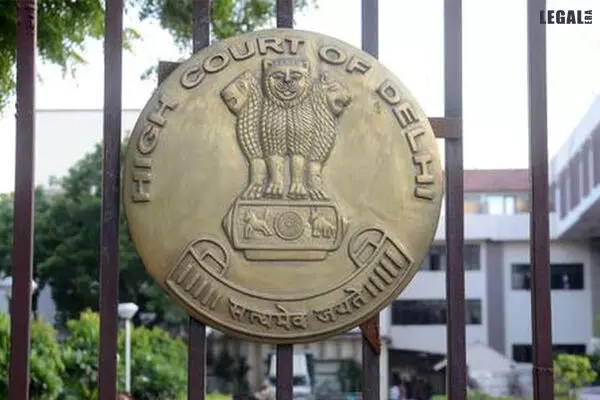- Home
- News
- Articles+
- Aerospace
- Artificial Intelligence
- Agriculture
- Alternate Dispute Resolution
- Arbitration & Mediation
- Banking and Finance
- Bankruptcy
- Book Review
- Bribery & Corruption
- Commercial Litigation
- Competition Law
- Conference Reports
- Consumer Products
- Contract
- Corporate Governance
- Corporate Law
- Covid-19
- Cryptocurrency
- Cybersecurity
- Data Protection
- Defence
- Digital Economy
- E-commerce
- Employment Law
- Energy and Natural Resources
- Entertainment and Sports Law
- Environmental Law
- Environmental, Social, and Governance
- Foreign Direct Investment
- Food and Beverage
- Gaming
- Health Care
- IBC Diaries
- In Focus
- Inclusion & Diversity
- Insurance Law
- Intellectual Property
- International Law
- IP & Tech Era
- Know the Law
- Labour Laws
- Law & Policy and Regulation
- Litigation
- Litigation Funding
- Manufacturing
- Mergers & Acquisitions
- NFTs
- Privacy
- Private Equity
- Project Finance
- Real Estate
- Risk and Compliance
- Student Corner
- Take On Board
- Tax
- Technology Media and Telecom
- Tributes
- Viewpoint
- Zoom In
- Law Firms
- In-House
- Rankings
- E-Magazine
- Legal Era TV
- Events
- Middle East
- Africa
- News
- Articles
- Aerospace
- Artificial Intelligence
- Agriculture
- Alternate Dispute Resolution
- Arbitration & Mediation
- Banking and Finance
- Bankruptcy
- Book Review
- Bribery & Corruption
- Commercial Litigation
- Competition Law
- Conference Reports
- Consumer Products
- Contract
- Corporate Governance
- Corporate Law
- Covid-19
- Cryptocurrency
- Cybersecurity
- Data Protection
- Defence
- Digital Economy
- E-commerce
- Employment Law
- Energy and Natural Resources
- Entertainment and Sports Law
- Environmental Law
- Environmental, Social, and Governance
- Foreign Direct Investment
- Food and Beverage
- Gaming
- Health Care
- IBC Diaries
- In Focus
- Inclusion & Diversity
- Insurance Law
- Intellectual Property
- International Law
- IP & Tech Era
- Know the Law
- Labour Laws
- Law & Policy and Regulation
- Litigation
- Litigation Funding
- Manufacturing
- Mergers & Acquisitions
- NFTs
- Privacy
- Private Equity
- Project Finance
- Real Estate
- Risk and Compliance
- Student Corner
- Take On Board
- Tax
- Technology Media and Telecom
- Tributes
- Viewpoint
- Zoom In
- Law Firms
- In-House
- Rankings
- E-Magazine
- Legal Era TV
- Events
- Middle East
- Africa
Delhi High Court upholds single-judge order in favor of Communication Components Antenna

Delhi High Court upholds single-judge order in favor of Communication Components Antenna
The earlier bench had also found the defendants infringing on the plaintiff’s patent
The Delhi High Court has dismissed an appeal filed by Ace Technologies Corp. against Communication Components Antenna Inc and upheld the findings of infringement in the order passed by a single judge.
The Division Bench comprising Justice Vibhu Bakhru and Justice Amit Mahajan rejected all grounds of invalidity raised by the appellant. It stated that no credible challenge to the validity of the patent was raised at the interim stage.
In 2018, Communication Components, the plaintiff, had filed a suit for infringement of the patent against Ace Technologies, the defendants and its group companies.
In July 2019, a single-judge of the high court found the defendants infringing on the plaintiff’s patent. He also rejected the invalidity challenge raised by the defendant against the patent.
As an interim measure, the judge directed the defendants to secure Rs.54.5 crores (which represented 10 percent of the sales revenue generated by the defendants from the sale of the infringing products), by way of a bank guarantee and cash deposit, failing which an injunction was to follow.
The defendants appealed against the single judge bench order, leading to the present judgment.
Justice Bakhru and Justice Mahajan provided an extensive analysis of the interplay between the claims and the specifications. Explaining the facts between the claims and the preferred embodiments disclosed in the patent, they stressed the patentable subject matter under Indian laws.
The judges held that a known product, specifically modified and configured to provide a specified result of an economic value, would be considered patentable as it would be a new product.
The bench further held, “If the product is novel, and a distinct improvement over the known technology, its patent would not be vulnerable to challenge on the ground that the antennae emitting asymmetrical beams were disclosed by prior arts.”
It added, “It would be erroneous to assume that a patent in respect of such a product is denied on the ground that it is covered under the broad classification of antennae that emits asymmetrical beams.”
The court rejected the contention that an erroneous test was applied for ascertaining the scope of claims being broader than the preferred embodiments disclosed in a patent.
The judges ruled, “Whether the beam pattern of the antennae manufactured and dealt with by the appellants is similar to the beam patterns as disclosed in the suit patent.”
Based on this logic, the court stated that the method of comparing the beam patterns for ascertaining the suit patent’s infringement was not faulty.



